Why we wear it
A Brief History
During World War I, the French Government awarded decorations for especially meritorious conduct in action to 156 American units varying in size
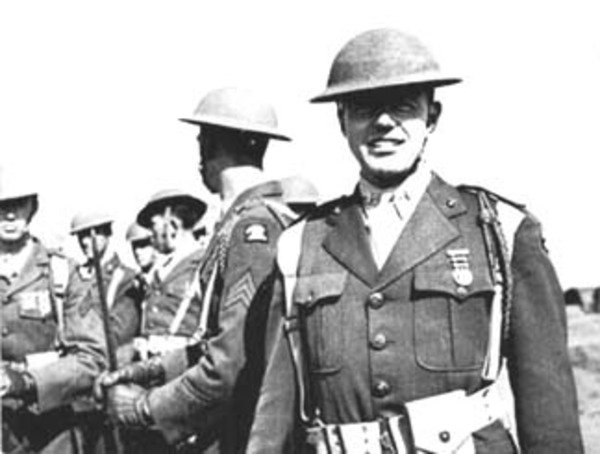
from a section to a brigade. These decorations were: the Fourragere and the Croix de Guerre (Cross of War) with various combinations of palms, gilt, silver, and bronze star devices.
The unit twice decorated with the Croix de Guerre with Palms was entitled to a braided and knotted cord, known as the Fourragere, in the green and red colors of the Croix de Guerre. The Fourragere becomes part of the uniform of the unit so cited, authorizing all members of the organization to wear the decoration on the left shoulder of the uniform as long as they remain members of the organization.
According to Larousse's Grand Dictionary of the XIX Century, the Fourragere was originated by the Duke of Alva, a Spanish general. After a unit of Flemish troops had made a rather hasty withdrawal from the battlefield, the Duke ordered "that any further misconduct, on the part of these troops, should be punished by hanging, without regard for rank or grade." The Flemish warriors, determined to reestablish themselves in the good graces of their commander, wore--as a reminder of their disgrace--coiled around one shoulder, a rope in the shape of a hangman's noose, at the end of which dangled a long spike. In their next battle the Flemish troops fought so gallantly that the noose and spike became a mark of distinction and honor.
The French Fourragere is a decoration instituted by Napoleon I for units which distinguished themselves in battle. I t was revived during World War I and was awarded by the French Ministry of War to organizations which were cited more than once in the French Orders of the Army. The three classes of the Fourragere are as follows: First--Legion d'Honneur (Scarlet); Second--Medaille Militare - (Yellow/Red); Third--Croix de Guerre with palm (Green/Red).
The Marine Corps and the Fourragere
In 1918, Marines of the Fifth and Sixth Regiments, by their heroic deeds of valor, inscribed the names of momentous and brilliant battles on the pages of Marine Corps history, as well as on their own regimental battle colors. They have the single honor of being the only two regiments in the American Expeditionary Force to receive three citations--two in the Orders of the Army and one in the Orders of the Corps--the Fourragere and the Croix de Guerre with two Palms and one Gilt Star. As a member of Second Battalion, Sixth Marines we are authorized to wear the Fourragere as a part of our uniform. Marines originally earned this award as an individual decoration through their heroism, bloodshed, and ultimate sacrifice on the fields of Belleau Wood, Soissons, and Champagne. Since World War I, Marines and Sailors of 2d Battalion, 6th Marines have worn the Fourragere as a unit decoration carrying it into battle at Guadalcanal, Tarawa, Okinawa and many other battles, which are listed in this website's article, "Battalion History."
This braided rope and spike embodies and recalls the courageous conduct and fighting spirit of Marines and Sailors who have gone before us. It marks us as warriors, a proud battalion, and a grand regiment. Wear the Fourragere with pride, dignity, and honor and remember always in whose footsteps you tread.
Photograph Captions
Above: A WWI Marine Private wearing the French Fourragere on his Service Dress "Alpha" uniform. The Service Dress uniform used to be the primary uniform worn in the field during this time period.
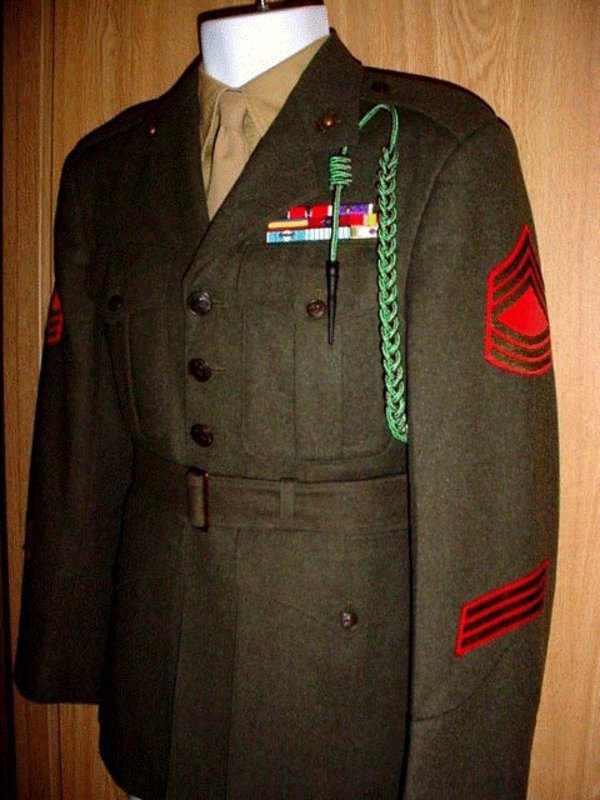
The Fourragere on the Service Dress "Alpha" uniform. The rank on the sleeve indicates this uniform to have belonged to a Sergeant Major between the years 1929-1937.
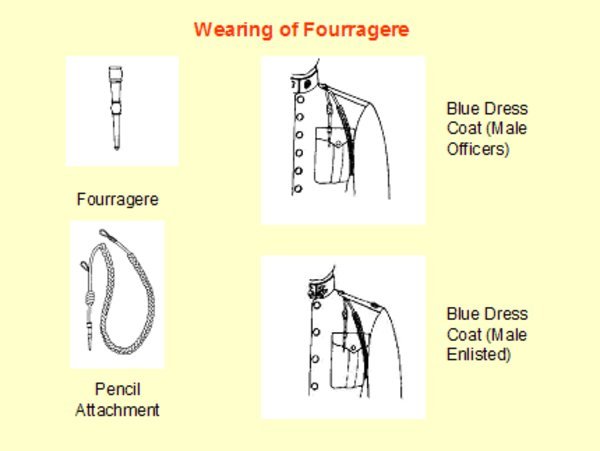
This is an excerpt from the Marine Corps Uniform Regulations, which provides instruction on the proper configuration and wear of the Fourragere on the Service Dress Blues.
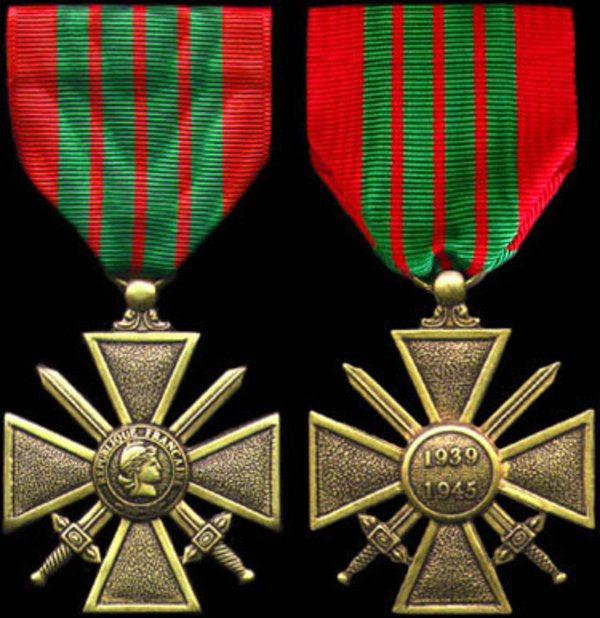
The Croix de Guerre. The medal on the left is the post WWI, but pre WWII medal. The medal on the right is the WWII medal. The WWI medal is similar to the one on the left with the only change being the order of the colors on the ribbon. Instead of green stripes on a red field it was red lines on a green field.

A WWII Croix de Guerre with Palm. 5th and 6th Marines earned two of these such medals during WWI.
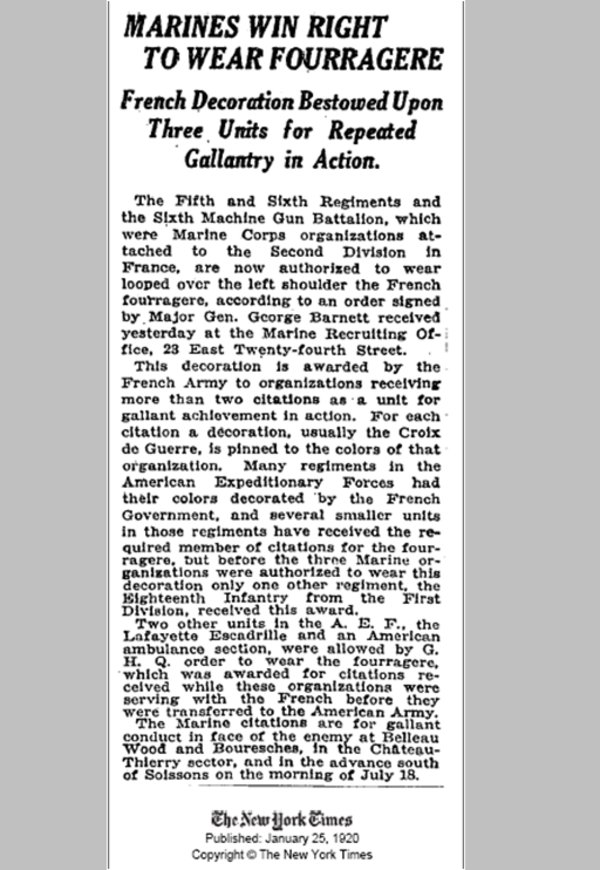
A scan of the original January 25, 1920 article run in the New York Times advertising to the Nation that the Fourragere had just been awarded to the 5th and 6th Marine Regiments and the 6th Machine Gun Battalion.